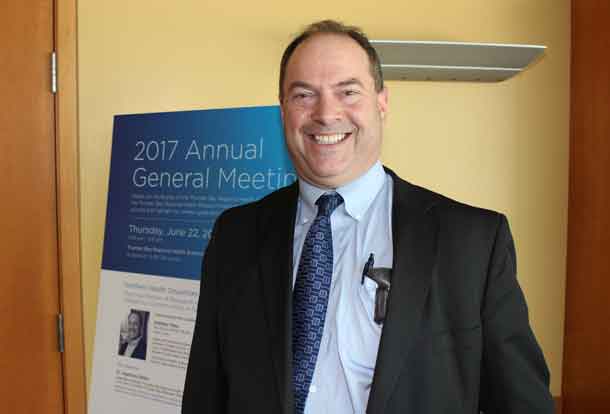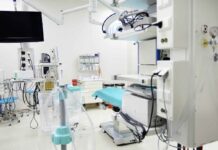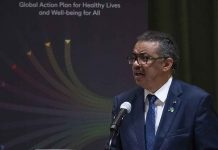

For the first time, Thunder Bay Regional Health Sciences Centre and Thunder Bay Regional Health Research Institute hosted a joint Annual General Meeting to celebrate another year of success and highlight shared goals and objectives for the upcoming year.
THUNDER BAY – Both the Health Sciences Centre and the Health Research Institute are focusing their priorities on health challenges that most affect the residents of Northwestern Ontario. That focus has been sharpened through collaborations between our scientists, clinicians at our Hospital and the Institute.
One of the Hospital’s most exciting accomplishments this year was the implementation of vascular surgery and on-site endovascular repair (EVAR), which is a major milestone in the implementation of a comprehensive cardiovascular surgery program for Northwestern Ontario. Improving the patient experience remains our main goal, with exciting advancements made in the level of care provided to seniors and mental health patients.
Under the leadership of Dr. David Puskas and Director Caroline Fanti, the Regional Orthopaedic Program gained tremendous momentum in the past year. The integrated regional program will provide close-to-home orthopaedic care, with regional sites in Fort Frances, Kenora and Dryden offering surgery, consultation and support.
Several initiatives were also launched this past year that will improve the overall experience and satisfaction of Indigenous patients and their families, including initiatives to enhance the welcoming environment such as Ojibwe classes, and resources to ensure a more synchronized transition from hospital to home, specially for residents of remote communities.
“One of the shared priorities of our Hospital and Health Research Institute is Indigenous health, with a particular focus on improving Indigenous health status disparities,” said Nadine Doucette, Chair of the Hospital’s Board of Directors. “Geographical isolation and socio-economic disadvantages contribute to the health disparities faced by the 69 Indigenous communities we serve. Today’s event paid particular focus to how our scientists and clinicians are connecting with Indigenous communities and their leaders to better address their health needs and expectations.”
The Health Research Institute reported that the number of participants in clinical trials is increasing, and clinical research in several health disciplines is expanding. Our cyclotron facility has started producing radioisotopes that are used to calibrate our positron emission tomography (PET) equipment, and we have submitted an application to Health Canada to be licensed to produce isotopes for use with our patients in the near future. In addition, Indigenous Health research has been prioritized in the Institute’s new Strategic Plan.
“Our Health Research Institute is growing steadily and we focus our efforts on patient-centred research that addresses the immediate needs of the population of Northwestern Ontario,” said Dr. Gary Polonsky, Chair of the Health Research Institute’s Board of Directors. “We’re very proud of the research projects that are helping us overcome barriers to Indigenous health in our region. These are the types of successes that will have applications across Canada and around the world.”
The Annual General Meeting welcomed special guest and keynote speaker Dr. Sheldon Tobe, Heart & Stroke Foundation/Northern Ontario School of Medicine Chair in Aboriginal and Rural Health Research, Associate Scientist at Sunnybrook Health Sciences Centre and Professor at the Northern Ontario School of Medicine. He presented on Northern health disparities and the importance of research to improve health outcomes for Indigenous communities in Northwestern Ontario.
The meeting also featured a presentation by Dr. Ingeborg Zehbe, Lakehead University/Thunder Bay Regional Health Research Chair; Senior Scientist, Thunder Bay Regional Health Research Institute, who spoke to research activity and how it translates to improved patient outcomes and experiences for Indigenous patients and families. Chief Peter Collins of Fort William First Nation also presented on how we’re working together to advance Indigenous health research.
To view Thunder Bay Regional Health Sciences Centre’s report, please visit http://tbrhsc.net/2016-2017annualreport/. To view Thunder Bay Regional Health Research Institute’s report, please visit http://tbrhsc.net/2016-2017-tbrhri-annual-report/.






